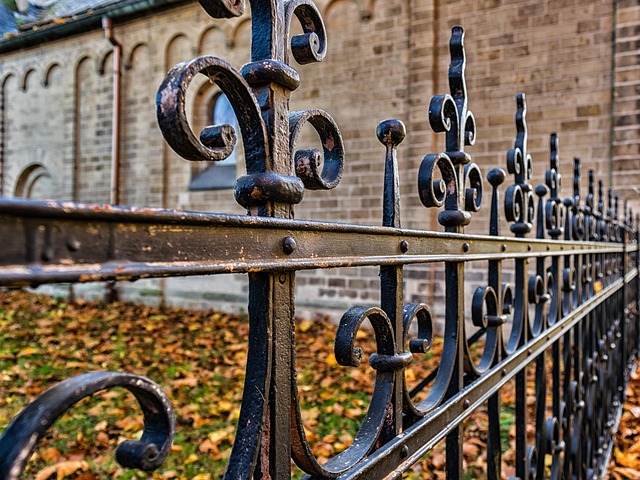“Enhance your New Bedford, Massachusetts property with a DIY fence installation! This comprehensive guide equips homeowners with the knowledge and step-by-step instructions to navigate the process successfully. From selecting the perfect fence option that aligns with local regulations to mastering the art of post placement in varying soil conditions, we’ve compiled essential tips for a robust and aesthetically pleasing fence. Discover how to prepare your yard, choose materials that withstand New Bedford’s climate, and maintain your new addition for years to come.”
- Understanding Your Fence Options for New Bedford Yards
- Measuring and Planning: A Step-by-Step Guide
- Installation Process: From Preparation to Post Placement
- Maintenance Tips for Long-Lasting Fences in Massachusetts Climate
Understanding Your Fence Options for New Bedford Yards
When it comes to fencing your New Bedford, Massachusetts yard, there’s a world of options to consider. From traditional wood picket fences that offer classic charm to robust vinyl designs that require little maintenance, each material has its unique benefits and aesthetic appeal. The key is understanding which style aligns best with your home’s architecture, your landscaping preferences, and your budget.
Factors like climate play a significant role in your choice as well. For instance, New Bedford’s humid summers and snowy winters might necessitate materials that can withstand both extreme conditions. Researching local building codes and seeking advice from professionals can further guide your decision, ensuring your new fence not only enhances your outdoor space but also complies with regulations.
Measuring and Planning: A Step-by-Step Guide
Before you start pounding nails, it’s crucial to measure and plan your fence installation. Begin by identifying the perimeter you want to fence off, using a tape measure to take precise measurements from corner to corner. Mark these points with stakes or spray paint for visibility. Next, decide on the height and style of your fence, considering factors like privacy levels and local regulations.
Using your measurements, create a scaled drawing of the fence layout, including gate placement and any additional features. This step ensures you have a clear vision of the final product and helps in acquiring the necessary materials. Remember, accurate planning is key to a successful DIY fence installation.
Installation Process: From Preparation to Post Placement
The installation process for a DIY fence begins with meticulous preparation, ensuring a solid foundation for your new barrier. New Bedford homeowners should start by assessing their property lines and obtaining any necessary permits from local authorities. Marking these boundaries clearly will guide the placement of posts, which is crucial for structural integrity. Next, dig holes for the posts, making sure they are deep enough to provide stability against shifting soil. The depth may vary based on soil conditions but generally should be around a third of the post’s height.
Once the holes are prepared, insert the posts and use concrete to secure them in place. Allow the concrete to set completely, as this step is critical for the fence’s long-term durability. After the posts are firmly established, attach the fence panels or rails according to the manufacturer’s instructions. This involves connecting horizontal rails to the posts, creating a framework that supports the barrier material of your choice, whether it’s wood, vinyl, or chain link. Proper alignment and securing each component will result in a sturdy and visually appealing fence.
Maintenance Tips for Long-Lasting Fences in Massachusetts Climate
To ensure your fence stands strong against New Bedford’s changing seasons, regular maintenance is key. In Massachusetts’ humid summers, treat wooden fences with a waterproof sealant every few years to prevent rot and mold growth. During the cold winter months, inspect for any damaged or loose boards and repair as needed to avoid water seepage into your yard.
For metal fences, consider a routine cleaning with a soft-bristled brush and mild detergent to remove dirt and grime. This will not only improve their aesthetic appeal but also help prevent corrosion. Regular checks for rust or paint chips are essential, especially in the harsh New England winter, so that you can touch up or replace damaged areas promptly.
